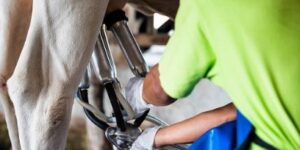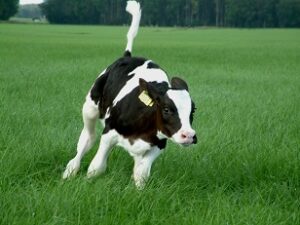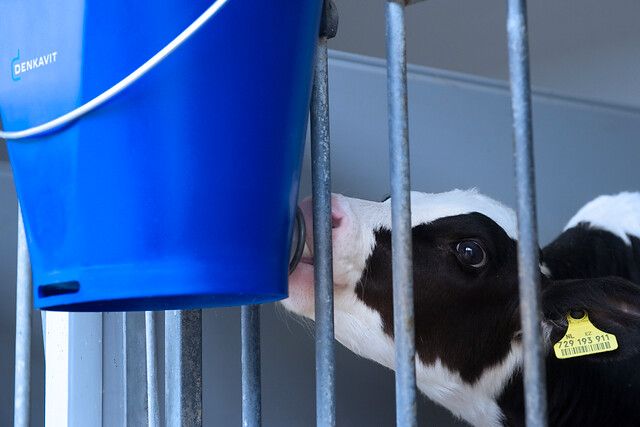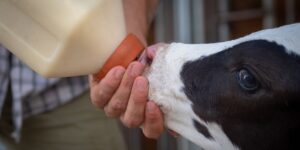Milk the cow completely immediately after giving birth
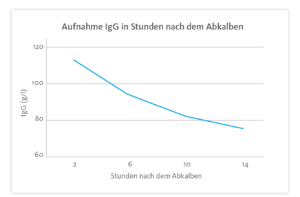
It is very important to milk the cow completely as soon as possible after giving birth, as this is when the concentration of antibodies in the milk is at its highest. Only a few hours after giving birth, the cow’s metabolism will absorb the antibodies back into her own body. This leads to a reduction of antibodies in the colostrum (see also Figure 1). In addition, milk production begins at birth and the colostrum becomes increasingly diluted. So you can get colostrum with a high concentration of antibodies if you are quick.
Quality is measurable!
Measuring is knowing! Several instruments are available. We recommend measuring colostrum with a refractometer for the most reliable results.
Labour hygiene
Prepare thoroughly cleaned equipment before calving. Maintain good hygiene during milking. For example, wear gloves and clean the udder thoroughly before milking. Bacteria can affect the quality of colostrum.
Ensuring a clean environment during and after birth
Infection pressure in the barn is often high. Bring the calf quickly to a clean calf pen.
As much colostrum as the calf will drink
Plenty, fast and often is the maxim when providing colostrum. The amount of antibodies (IgG) that a calf can absorb decreases rapidly after birth. After 6 hours, the absorptive capacity is about 50% (see Figure 1). It is therefore very important that a calf receives sufficient fresh, high quality colostrum in the first few hours after birth.

Store remaining colostrum in the fridge
Fresh colostrum can be stored in the refrigerator for up to 3 days (recommended temperature 4°C). Vitaladd can be used for acidification. If you have enough good quality colostrum left over from a cow, you should freeze it quickly and cleanly. We recommend using a flat bag for this. The milk can then be thawed more quickly.
Feed Colostrum completely
The first colostrum contains the most antibodies and is therefore the best for the calf. Make sure the colostrum is cooled between feeds before offering it to the calf for the 2nd or 3rd time in the first few hours of life.
Measuring blood IgG levels
To get a detailed insight into your own colostrum management, it is worthwhile to measure the IgG level in the blood on days 3-5 of life. This shows whether the calves have been well cared for and have had a good start in life.
Did you know that our youngstock specialists can work with you to analyse and optimise colostrum management on your farm? We always have a refractometer with us. Let us check the quality of your colostrum. Do not hesitate to contact us!



